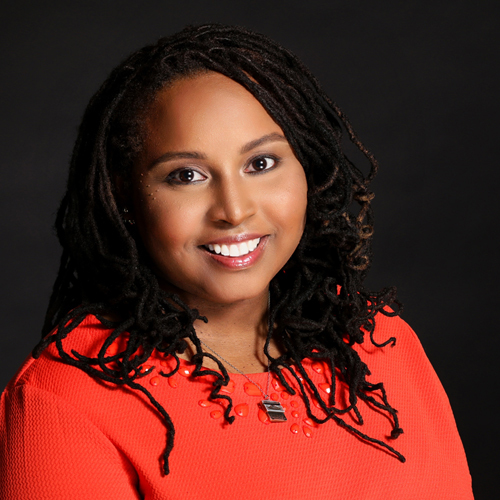Pregnant While Black: One Mother’s Experience as a Black Pregnant Woman in New York
// By Wendy Margolin //

Althea Fung has been a writer for Plain-English Health Care since 2018. She recently gave birth to her first child. We asked her to share her perspectives on what it’s like to navigate the healthcare system as a Black woman, and how to make digital experiences more relevant to Black people.
Althea Fung learned an important lesson about her healthcare needs during a dermatologist visit as a young adult. During a discussion about dry skin, the dermatologist asked Fung, who is Black and wears dreadlocks, about her hair care routine. She responded that she washes her hair about every three weeks. After years of experience maintaining her long locks, Fung knew that washing it without heat to dry the hair increases the chances of developing mold. And using heat on her hair regularly would be damaging.
The doctor expressed her disgust, directing her to wash her hair daily.
More than that the dermatologist wasn’t knowledgeable about Black hair care, it was clear to Fung that she’d be more comfortable seeking care from Black doctors or those who are culturally aware of Black healthcare needs in general.
Today, she goes out of her way to find Black female physicians, even when seeing a specialist means traveling across the New York Metropolitan area.

Althea Fung
Fung is by no means alone. Access to physicians culturally aware of healthcare for the Black community often translates to a better patient experience. Research shows that doctors who care for patients of the same race are far more likely to receive higher scores on patient surveys. Other studies have found similar links.
Having a culturally sensitive Black doctor also saves lives. In some areas, like New York City, where Fung gave birth, Black women are nine times more likely to die of pregnancy-related complications. Knowing this, Fung was especially motivated to use a Black OB/GYN when pregnant.
As a healthcare writer focused on healthcare inequity, Fung knew the dangers of giving birth in the U.S. as a Black woman. She was more likely to develop preeclampsia, have an emergency c-section and even die from giving birth.
Black patients also have higher rates of chronic diseases like diabetes, asthma, and heart disease. Testing is more likely to reveal vitamin D deficiencies and sickle cell anemia. Overall, Black women are over three times more likely to die of maternal mortality than white women (41.4 vs. 13.7 per 100,000).
The tragic loss of a Black pregnant woman from a deadly epidural during Fung’s recent pregnancy made her fear all the more real. That incident forced Fung to have the uncomfortable conversation with her partner about what he would do to raise their son if she died from childbirth.
Improving Maternal Mortality Rates for Black Women and Women of Color
A lot has to happen on a societal and medical level to reduce health disparities and rates of Black maternal mortality. But individuals, physicians, hospitals, and their marketing teams can do their part. Fung recommends the following four suggestions.
1. Showcase Black Doctors
Fung says marketing teams should work with physicians to ensure physician photos and personalized bios appear on their profiles so that patients can be more informed when selecting doctors. “I made a conscious decision to only go to Black female doctors. I don’t go to the doctor unless I first see a photo of the doctor,” says Fung.
Showcasing physicians of color in marketing materials can help make them more well-known to prospective patients and inspire the next generation of doctors. Young adults can only dream to become what they can imagine.
2. Have More People of Color on Healthcare Marketing Teams
Fung has often been the only Black person in the room of hospital marketing teams. This affects what topics are covered and who it reaches. She recalls times when content ideas or more diverse marketing channels were turned down. “They wouldn’t even consider it because they don’t think that’s necessarily their target audience. But they are the target group and teams can be missing out on connecting with them because they aren’t listening to the radio stations or reading the same news sites,” says Fung.
How to Find Black Doctors
When it comes to finding a physician or specialist, accessing care from Black doctors — especially female doctors — can be a challenge.
The recent Supreme Court affirmative action decision may make matters worse.
Black patients seeking Black physicians need to look no further than blackdoctor.org. The site is dedicated to providing relevant health news for the Black community and has a nationwide listing of Black doctors and doctors of color. Fung notes that there are also other resources to find a Black provider like White Coats for Black Lives, Black Men in Medicine and the Association of Black Women Physicians.
3. Write Content that Raises Awareness About Health Disparities
Raising awareness about health disparities in minority communities helps more people become educated about health and able to advocate for themselves and their loved ones. “There’s a lot more discussion about health disparities, but I don’t think that has translated to educating patients better,” says Fung.
More content about the healthcare needs of minority communities is badly needed. Existing content should include information about any health outcome variations based on race and gender.
4. Use Keywords for Every Audience
Some target audiences may use different language to describe symptoms and diseases. For example, Fung says it’s not uncommon among her friends and family to refer to diabetes as “high sugar.” When putting together medical information, include language the audience is most likely to search.
Lives today are at stake, and change needs to be fast and sweeping. Marketers can do their part by doing what they do best — listening to the voice of the customer and designing high-impact marketing campaigns and digital experiences tailored to the needs of their target audience.
As owner of Sparkr Marketing, Wendy Margolin helps busy healthcare marketing communications teams create more content. She’s on a mission to build a better medical web, one article at a time. Her favorite form of content is hospital brand journalism, which ties together her 20-year career in journalism, marketing, and healthcare.

